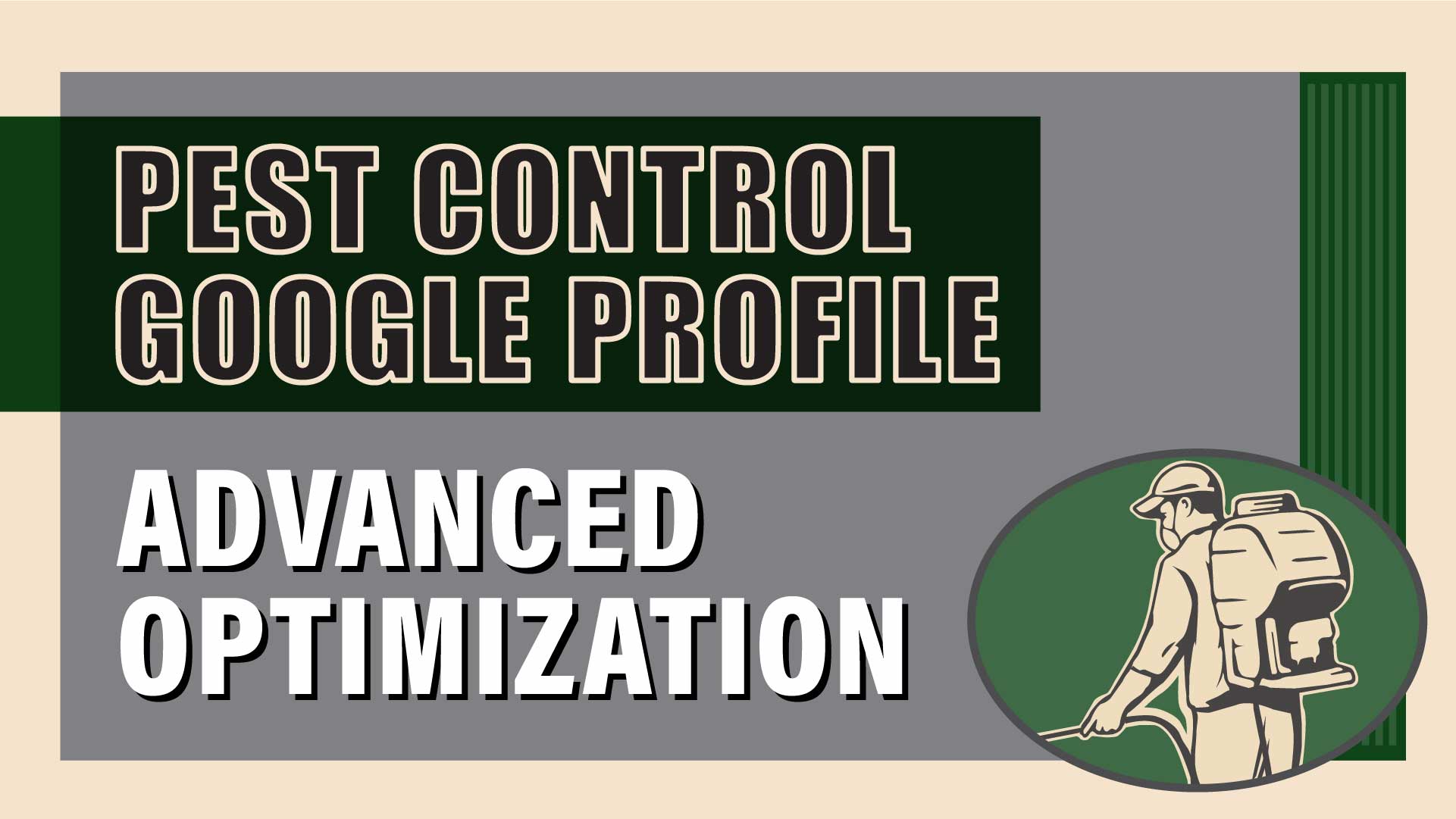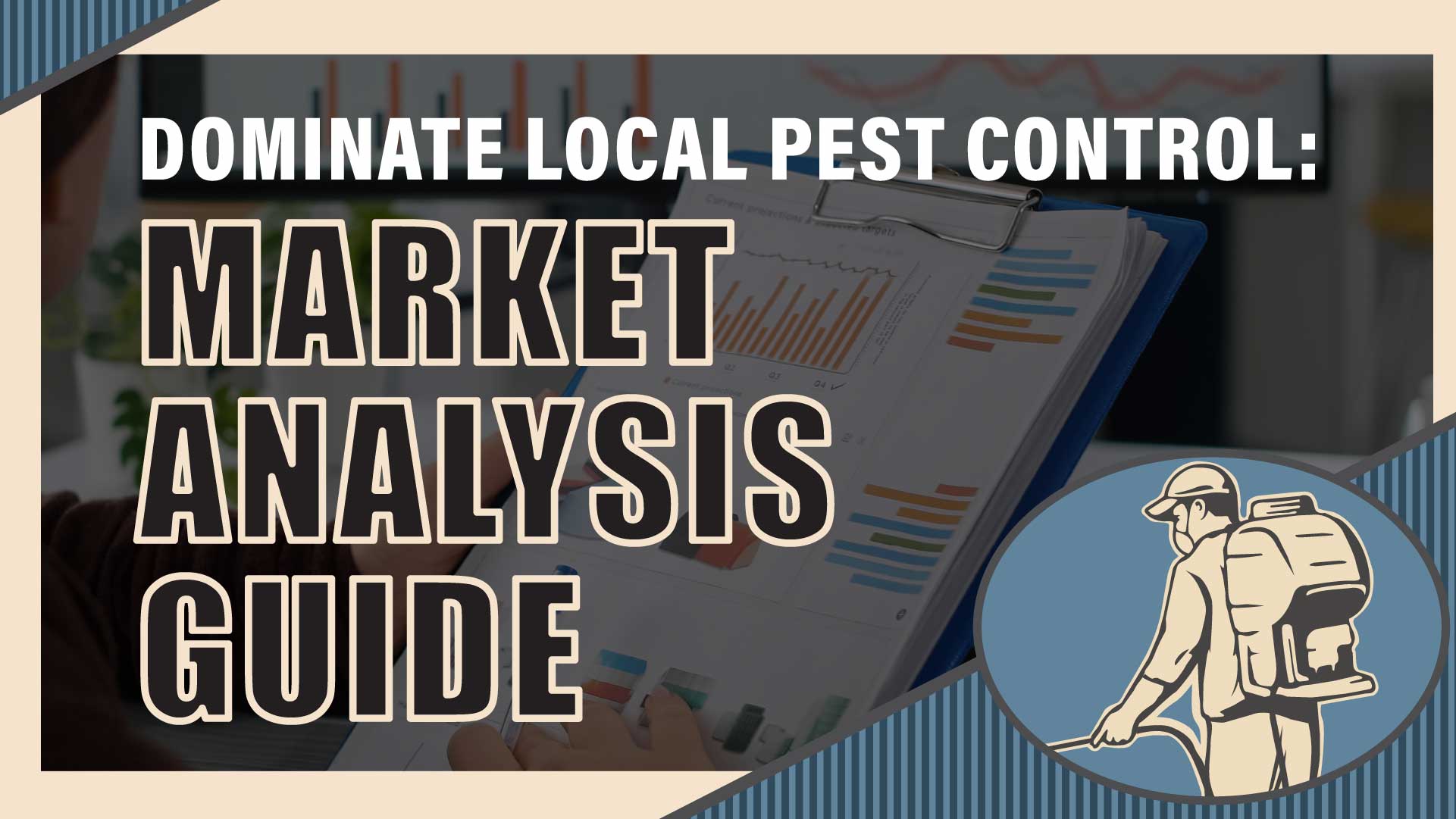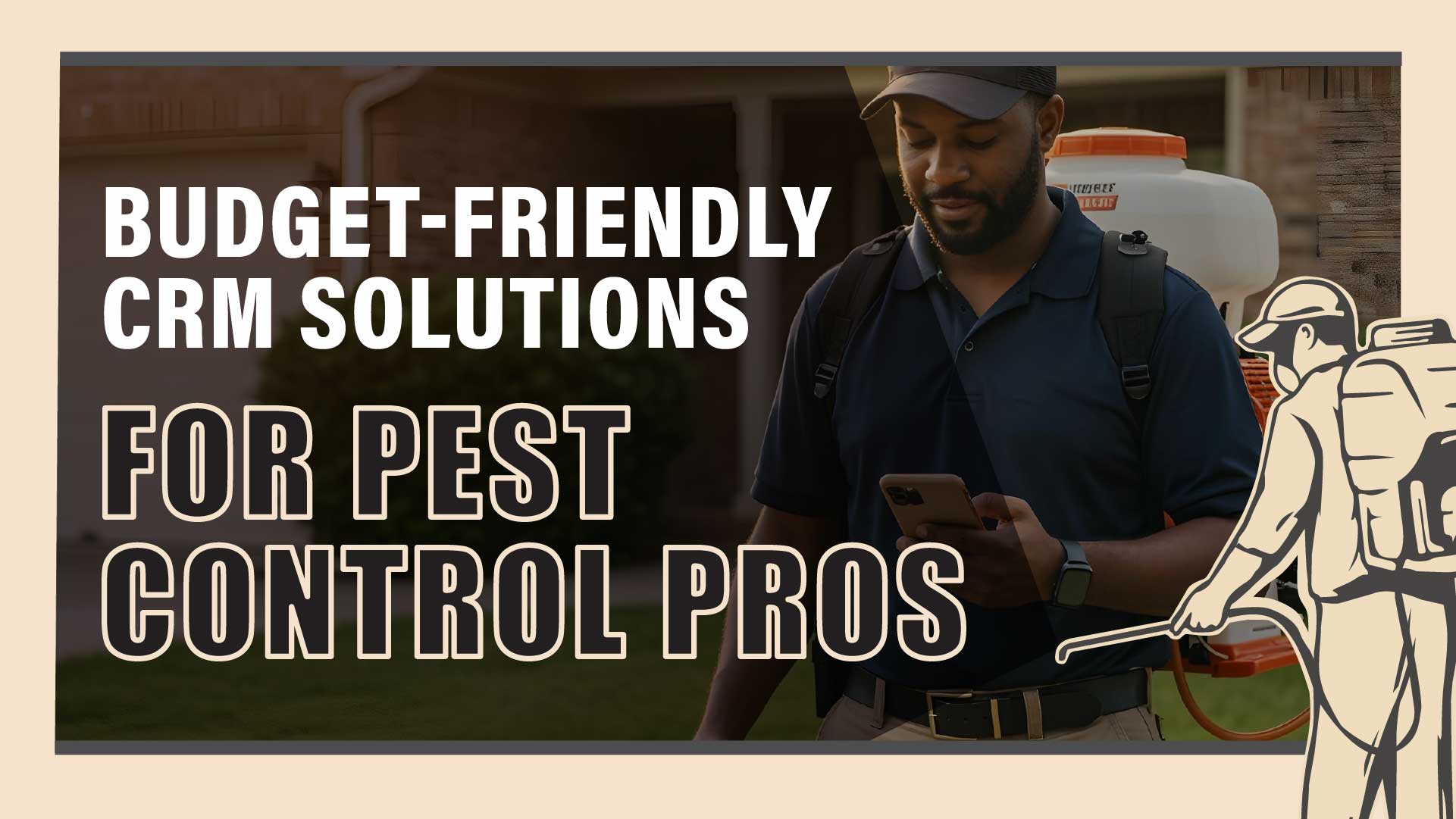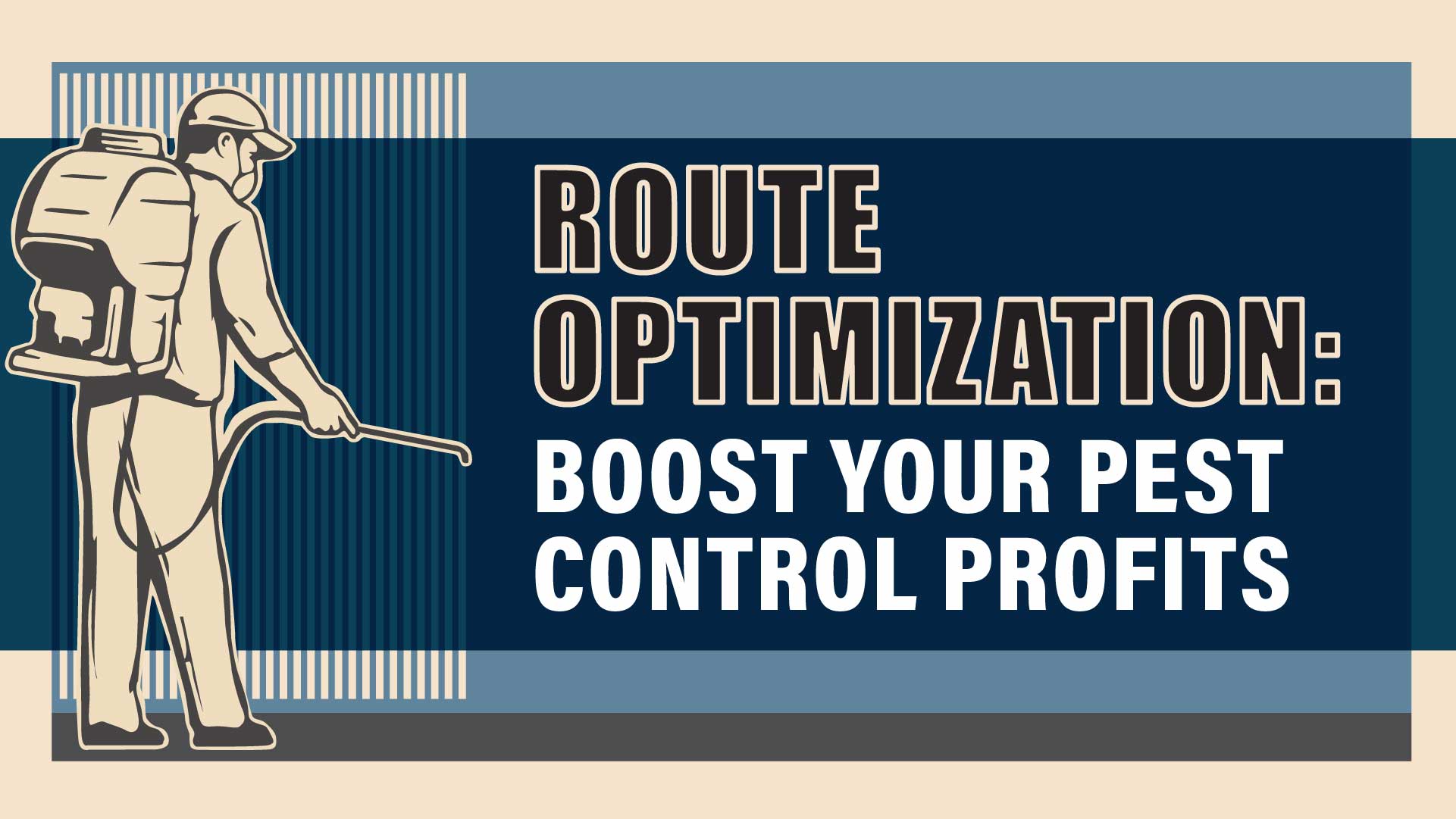Are your marketing efforts getting bugged down by inconsistent results? If you're running a pest control company, you've probably noticed that your phone rings off the hook during certain months, only to become eerily quiet during others. It's like watching your revenue do the cha-cha – two steps forward, one step back.
Trust me, you're not alone in this seasonal scramble. While most pest control companies understand that their business fluctuates with the seasons, many struggle to adapt their marketing strategies accordingly. They're still blasting out the same old cockroach ads in December when their potential customers are actually dealing with winter-loving rodents seeking shelter from the cold.
Here's the thing: successful pest control marketing isn't just about knowing how to eliminate pests – it's about understanding when specific pests become a problem for your customers and positioning your services at exactly the right moment. Think of it as pest control matchmaking – connecting your services with your customers' needs at precisely the right time.
In this comprehensive guide, we'll walk you through how to transform your marketing strategy from a one-size-fits-all approach to a dynamic, season-sensitive powerhouse. You'll discover:
- How to predict and prepare for seasonal pest control demands
- Practical strategies for adjusting your marketing message throughout the year
- Tips for maintaining steady revenue during traditionally slower seasons
- Ways to leverage your pest control marketing strategy across different channels
- Methods for measuring and optimizing your seasonal campaigns
We've got you covered whether you're dealing with spring's ant invasions or winter's rodent incursions. Let's turn those seasonal swings from a challenge into an opportunity for growth.
What is Seasonal Pest Control Marketing?
Gone are the days when pest control marketing meant simply putting an ad in the Yellow Pages and waiting for the phone to ring. Seasonal pest control marketing is the strategic approach of aligning your marketing efforts with the natural ebb and flow of pest activity throughout the year.
Why Does Seasonality Matter in Pest Control Marketing?
Think of seasonality as your marketing compass. Just as you wouldn't try to sell snow shovels in July, promoting termite services in December might not be the best use of your marketing budget. Here's why seasonality should be the backbone of your marketing strategy:
- Google Trends data shows that searches for "pest control near me" spike during peak spring months. (Source: Google Trends)
- Cost per click (CPC) for pest control keywords can vary significantly between seasons. (Source: Reddit)
- Weather pattern analysis shows a direct correlation between temperature changes and pest activity. (Source: National Weather Service)
- EPA guidelines suggest different pest management approaches based on seasonal patterns. (Source: EPA )
(Source: Google Trends)
Seasonal Pest Control Marketing Calendar
Regional Pest Patterns and Problems
Spring (March-May): The Great Awakening
As nature springs back to life, so do the pests. This is your time to shine with:
Common Spring Pests:
- Ants (especially carpenter ants)
- Termites during swarm season
- Spring beetles
- Wasps starting new colonies
Marketing Focus:
- Highlight preventive treatments
- Emphasize property protection
- Focus on early-bird specials
- Promote annual service agreements
Regional Considerations
- Northeast: Focus on termite swarms and carpenter ants
- Mid-Atlantic: Focus on subterranean termite swarms and early stink bug prevention
- Southeast: Campaign starts for mosquitoes, palmetto bugs, and fire ants
- Gulf Coast: Target Formosan termite prevention and fire ant control
- Midwest: Emphasis on flood-related pest issues and German roach prevention
- Mountain Region: Early carpenter ant prevention and miller moth control
- Southwest: Focus on scorpion emergence and desert termite swarms
- Northwest: Target moisture ant colonies and early spider prevention
Summer (June-August): Peak Performance
The busy season is here, and competition is fierce. Stand out by:
Key Summer Strategies:
- Showcase your expertise in handling multiple pest types
- Emphasize same-day service during peak demand
- Highlight your heat-specific pest solutions
- Market your mosquito control services
Regional Considerations
- Northeast: Peak mosquito and tick season, focus on bed bug prevention
- Mid-Atlantic: Intense mosquito control and wood-boring beetle prevention
- Southeast: High humidity drives roach and fire ant activity
- Gulf Coast: Hurricane preparation and peak cockroach control
- Midwest: Wasp, yellow jacket, and earwig peak activity
- Mountain Region: Peak miller moth activity and cluster fly control
- Southwest: Night scorpion activity and roof rat control
- Northwest: Focus on carpenter ant control during dry season
Pro Tip: Create urgency without fear-mongering. Instead of "Your house could be infested!" try "Protect your summer BBQs from uninvited guests!"
Fall (September-November): The Transition Phase
As temperatures drop, pests look for warm places to call home. Your marketing should:
Fall Focus Points:
- Emphasize exclusion services
- Promote rodent control
- Highlight overwintering pest prevention
- Market indoor pest protection packages
Regional Considerations
- Northeast: Early rodent prevention and exclusion services
- Mid-Atlantic: Stink bug invasions and rat prevention services
- Southeast: Hurricane season pest displacement response
- Gulf Coast: Post-hurricane pest control and palmetto bug management
- Midwest: Spider control priority and Asian lady beetle prevention
- Mountain Region: Cluster fly prevention and altitude-driven migrations
- Southwest: Second termite swarm season and black widow control
- Northwest: Moisture-seeking pest control and Norway rat prevention
Winter (December-February): The Indoor Season
Don't let your marketing hibernate! Winter brings its own opportunities:
Winter Marketing Angles:
- Focus on indoor pest control
- Promote annual service contracts
- Highlight winter-specific pests like rodents
- Market preventive treatments
Winter Regional Considerations
- Northeast: Heavy focus on rodent control and exclusion
- Mid-Atlantic: Coastal moisture pest control and overwintering stink bugs
- Southeast: Year-round pest activity with drywood termite focus
- Gulf Coast: Ongoing cockroach and paper wasp management
- Midwest: Cluster fly and boxelder bug prevention
- Mountain Region: Winter pest exclusion and box elder bug control
- Southwest: Desert rodent control and pack rat prevention
- Northwest: Moisture pest control and pavement ant invasions
How Do You Create an Effective Seasonal Marketing Strategy?
Success in seasonal marketing requires more than just changing your ad copy. Here's your action plan:
- Resource Planning:
- Allocate budget and adjust pricing according to seasonal demands
- Staff up during peak seasons
- Prepare marketing materials in advance
- Channel Selection:
- Social Media: Use Facebook and Instagram for visual impact
- PPC: Work with a PPC expert to optimize campaigns
- Email Marketing: Segment lists by past service history
- Content Marketing: Create season-specific blog posts and videos
- Message Timing:
- Start seasonal campaigns 2-3 weeks before peak season
- Maintain consistent brand presence year-round
- Adjust messaging based on weather patterns
- Plan for emergency pest situation marketing
Digital Marketing Tips for Each Season
Your digital presence needs to be as dynamic as the pest calendar. Here's how to adapt your online strategy throughout the year:
Spring:
- Create content about spring cleaning and pest prevention
- Run targeted PPC campaigns for termite and ant control
- Share educational social media posts about swarm season
- Launch email campaigns about early-bird specials
Summer:
- Increase Google Ads budget for high-intent keywords
- Post "before and after" success stories on social media
- Create urgency with limited-time summer specials
- Develop mosquito-specific landing pages
Fall:
- Focus blog content on winterization and pest exclusion
- Create Pinterest-worthy infographics about fall pests
- Run retargeting campaigns to previous summer customers
- Develop video content about pest entry points
Winter:
- Maintain engagement with indoor pest prevention tips
- Share winter pest horror stories (with happy endings!)
- Create cozy content about keeping homes pest-free
- Promote annual contracts with seasonal pricing
Search Engine Optimization (SEO)
- Primary Keywords: "seasonal pest control," "pest prevention services", etc.
- Location-Modified Terms: "[city] pest control services"
- Long-tail Variations: "when to schedule pest control services"
Content Marketing Calendar
- Blog Topics by Season
- Social Media Posting Schedule
- Email Campaign Timing
- Video Content Plans
Industry Standards and Compliance
- EPA Regulations for Seasonal Treatments
- State-specific Requirements
- Industry Best Practices from the National Pest Management Association
Common Seasonal Marketing Mistakes to Avoid
Don't let these marketing mishaps bug down your success:
- Timing Troubles
- Starting seasonal campaigns too late
- Ending promotions too early
- Ignoring weather pattern changes
- Missing local event opportunities
- Message Misalignment
- Using summer pest images in winter ads
- Ignoring regional pest differences
- Overlooking cultural considerations
- Missing emergency service opportunities
- Budget Blunders
- Underspending during peak seasons
- Completely cutting off-season advertising
- Poor marketing budget allocation across seasons
- Ignoring competitive analysis
- Missing early booking opportunities
Measuring Your Seasonal Marketing Success
Track these metrics to ensure your marketing efforts aren't crawling along:
Key Performance Indicators:
- Seasonal conversion rates
- Cost per acquisition by season
- Customer lifetime value
- Seasonal revenue comparison
- Return on ad spend (ROAS)
Analytics Tools:
- Google Analytics 4
- Call tracking software
- CRM seasonal reporting
- Social media insights
- Email marketing metrics
Tools and Resources for Seasonal Planning
Essential tools for your pest control marketing arsenal:
Planning Tools:
- Seasonal content calendar templates
- Weather pattern tracking tools
- Competitor analysis software
- Customer feedback platforms
Marketing Resources:
- Stock photo libraries for seasonal pests
- Email template builders
- Social media scheduling tools
- Local SEO checkers
Message Timing
- Start seasonal campaigns 2-3 weeks before peak season
- Maintain consistent brand presence year-round
- Adjust messaging based on NOAA weather patterns
- Plan for emergency pest situation marketing
Professional Resources and Certifications
- National Pest Management Association (NPMA) guidelines
- QualityPro certification programs
- State Pest Control Associations
- Green Shield Certified pest management programs
Conclusion
Just like pests don't take a vacation, your marketing shouldn't either. The key to successful seasonal pest control marketing is staying one step ahead – just like you do with pest prevention. By aligning your marketing efforts with natural pest patterns, you'll maximize your budget efficiency and position yourself as the go-to expert in your area.
Remember, the most successful pest control companies don't just react to seasons – they prepare for them. Whether it's termites in spring, mosquitoes in summer, rodents in fall, or overwintering pests in winter, your marketing should be as adaptable as the pests themselves.
Ready to transform your seasonal marketing strategy? Don't let your competition bug you out of potential customers. Contact me and create a pest control marketing strategy that works year-round.






